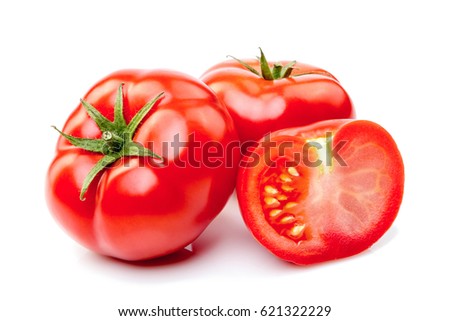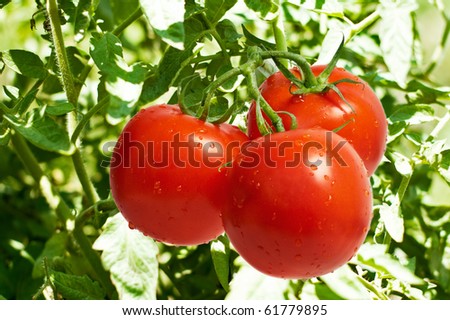Flavor is only one reason to home-grow tomatoes; they're also incredibly healthy. Rich in flavonoids and other phytochemicals, tomatoes have anti-carcinogenic and other healthy properties.
They're also an excellent source of lutein, zeaxanthin and vitamin C (which is most concentrated in the jelly-like substance that surrounds the seeds) as well as vitamins A, E and B-complex vitamins, potassium, manganese and phosphorus. Other lesser-known phytonutrients found in tomatoes include:
Flavonols: rutin, kaempferol and quercetin
Flavonones: naringenin and chalconaringenin
Hydroxycinnamic acids: caffeic acid, ferulic acid and coumaric acid
Glycosides: esculeoside A
Fatty acid derivatives: 9-oxo-octadecadienoic acid
Lycopene — a carotenoid antioxidant that gives fruits and vegetables like tomatoes and watermelon a pink or red color — is another one of tomatoes' claims to fame. Lycopene's antioxidant activity has long been suggested to be more powerful than other carotenoids such as beta-carotene, and research has revealed it may significantly reduce your stroke risk (while other antioxidants did not) and plays an important role in bone health.
In addition, lycopene from tomatoes (including unsweetened organic tomato sauce) has also been shown to be helpful in treating prostate cancer.
Organic Tomatoes Are Better for You
Using organic growing methods makes sense, as it's better for your health and the environment. Plus, the resulting tomatoes may be more nutritious. One study found growing tomatoes according to organic standards resulted in dramatically elevated phenols content compared to tomatoes grown conventionally, using agricultural chemicals.
The organic tomatoes were found to contain 55 percent more vitamin C and 139 percent more total phenolic content at the stage of commercial maturity compared to the conventionally grown tomatoes.
The conventional tomatoes were significantly larger; however, while many unaware consumers equate size with quality, this simply isn't the case. At least in the case of organic tomatoes, you get more even though it may be in a smaller "package."
Facts Credit: mercola.com
They're also an excellent source of lutein, zeaxanthin and vitamin C (which is most concentrated in the jelly-like substance that surrounds the seeds) as well as vitamins A, E and B-complex vitamins, potassium, manganese and phosphorus. Other lesser-known phytonutrients found in tomatoes include:
Flavonols: rutin, kaempferol and quercetin
Flavonones: naringenin and chalconaringenin
Hydroxycinnamic acids: caffeic acid, ferulic acid and coumaric acid
Glycosides: esculeoside A
Fatty acid derivatives: 9-oxo-octadecadienoic acid
Lycopene — a carotenoid antioxidant that gives fruits and vegetables like tomatoes and watermelon a pink or red color — is another one of tomatoes' claims to fame. Lycopene's antioxidant activity has long been suggested to be more powerful than other carotenoids such as beta-carotene, and research has revealed it may significantly reduce your stroke risk (while other antioxidants did not) and plays an important role in bone health.
In addition, lycopene from tomatoes (including unsweetened organic tomato sauce) has also been shown to be helpful in treating prostate cancer.
Organic Tomatoes Are Better for You
Using organic growing methods makes sense, as it's better for your health and the environment. Plus, the resulting tomatoes may be more nutritious. One study found growing tomatoes according to organic standards resulted in dramatically elevated phenols content compared to tomatoes grown conventionally, using agricultural chemicals.
The organic tomatoes were found to contain 55 percent more vitamin C and 139 percent more total phenolic content at the stage of commercial maturity compared to the conventionally grown tomatoes.
The conventional tomatoes were significantly larger; however, while many unaware consumers equate size with quality, this simply isn't the case. At least in the case of organic tomatoes, you get more even though it may be in a smaller "package."
Facts Credit: mercola.com







